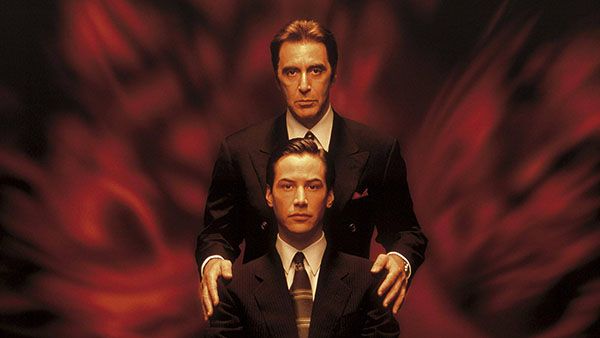“The greatest trick the Devil ever pulled was convincing the world he didn’t exist,” says Kevin Spacey’s Keyser Söze in 1996’s The Usual Suspects. It was, writes Tracy Robey at racked.com, a vision of evil – hidden in plain sight and wearing utterly forgettable clothes – “that captured pop culture’s imagination”.
Trumping other 1990s takes on Satan, such as Liz Hurley’s vampish temptress in Bedazzled and the slickly attired corporate Al Pacino in The Devil’s Advocate, this insight about the banality of evil was a far cry from increasingly laughable takes on the Devil that had so often held centre stage in the West.
As Ropey writes in ‘How Tights Took the Devil From Terrifying Demon to Mustachioed Prankster’, tellings and retellings of the Faust story had seen popular depictions of the Devil shift from being “the ugly and terrifying Enemy of Man and God in the Renaissance to a Renaissance tights-wearing chopped ham spokesperson in the 20th Century”.
The Devil of the medieval and Renaissance imagination, Ropey writes, was a monstrous figure, though in early versions of the Faust story he, or at least his earthy representative Mephistopheles, was typically described, at least by Protestant authors during the era of the Wars of Religion, as taking the form of a monk.
Appearance
As the story of Faust mutated from a Renaissance fable, via Goethe’s play, to Charles Gounod’s 1859 romantic opera, the appearance of Mephistopheles transformed while remaining true to the story’s Renaissance setting.
“Once brought to the stage, the charming yet infernal nature of Mephistopheles could not be left to the imagination of the audience, and so the signature look of the 19th-Century Devil was born,” Ropey explains.
“Whether in publicity photos of opera singers or in the advertisements for deviled ham, coffee, and Tabasco sauce, the Devil was a goateed and moustachioed man dressed in an all-red Renaissance costume,” she writes, noting how this absurd way of imagining the Devil fed into popular scepticism.
“In the wake of the Renaissance, scientific revolution, and enlightenment, people started to think that the idea of the Devil was at best superstitious and at worst ridiculous. To modern people, the idea of a man that personified evil roaming around the Earth in Renaissance tights was increasingly out of step with how they understood evil,” she writes, noting how risqué devil costumes were sported by the likes of Anita Ekberg from the 1950s on. “Reduced to humour on one side and titillation on the other, old Mephistopheles became ridiculous and deeply unscary.”
Not that our sense that real evil comes from ourselves is any excuse for us to play down the reality of the Devil, as Pope Francis constantly reminds us.
Fittingly enough for a Jesuit disciple of the great Romano Guardini, the Pope constantly warns his flock of the threat posed by the Devil, as even a cursory google search shows: ‘You can’t dialogue with Devil’, ‘Pope Francis says the Devil is behind anti-Christian persecution’, ‘013 warnings from Pope Francis on man’s oldest foe, the Devil’, ‘Pray to archangels for protection from Devil’, ‘Being Catholic means daily battle against the Devil’ and so on.
Even three years ago, in a washingtonpost.com piece, Anthony Faiola could write: “Largely under the radar…Francis has not only dwelled far more on Satan in sermons and speeches than his recent predecessors have, but also sought to rekindle the Devil’s image as a supernatural entity with the forces of evil at his beck and call.
It will be interesting to see what Bellarmine University’s Greg Hillis – @gregkhillis on Twitter – makes of this in his ‘Satan’ entry in next spring’s A Pope Francis Lexicon.
In the meantime it’s worth giving time to this oft-overlooked aspect of what Pope Francis tries to teach us, perhaps in combination with Daniel Burke’s edition.cnn.com piece ‘The Pope’s dark night of the soul’, a fascinating essay that even two years after publication continues to shed impressive light on this remarkable, and sometimes puzzling, papacy.


 Greg Daly
Greg Daly
